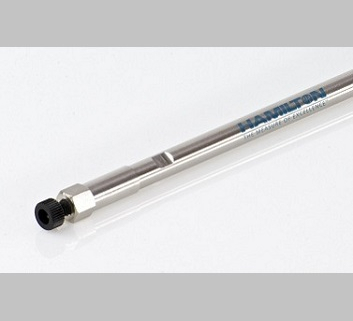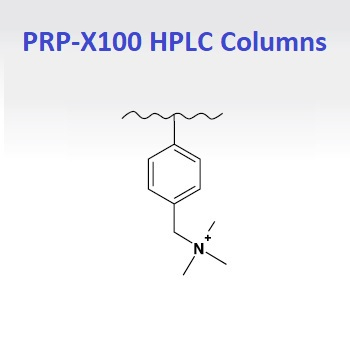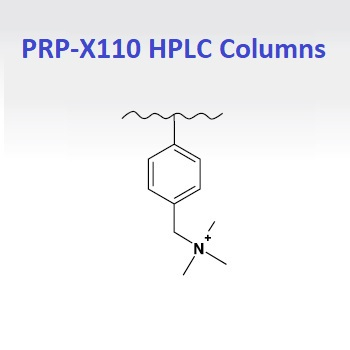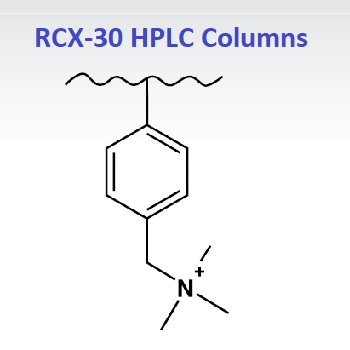
Hamilton Anion Exchange HPLC Columns
In anion exchange chromatography, the stationary bed has an ionically positive (+) charged surface while the sample ions are of negative (-) charge. This technique is used almost exclusively with ionic or ionizable samples. The stronger the negative charge on the sample, the stronger it will be attracted to the positive charge on the stationary phase, and thus the longer it will take to elute. Elution in ion chromatography is effected by mobile phase pH and ionic-strength, and, to a lesser extent, operation temperature. The ability to use the full pH range and elevated temperatures are distinct advantages compared to silica-based supports.
Anion Exchange Capacity
Anion exchange capacity is a measurement of the number of negative charges (anions) that the exchange resin can bind to and is reported in singly charged ion equivalents per 1 gram of resin. Exchange capacity is dependent upon the pH of the mobile phase and in anion exchange chromatography; as mobile phase acidity decreases (pH increases), the exchange capacity decreases.
Hamilton offers six polymeric packing materials for anion exchange separations, PRP-X100, PRP-X110, PRP-X500, PRP-X600, RCX-10, and RCX-30. Ohio Valley offers all of these Hamilton HPLC Columns. If the column you want is not listed on our website, please request a quote.
- Display 15 Products per page




